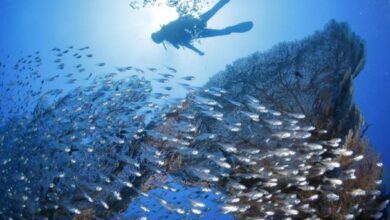Science needs women


On February 9 UNESCO released its Science Report: Towards 2030, ahead of the International Day of Women and Girls marked on February 11. The report found women are still a minority in the research world.
Between 2000 and 2012 the share of women graduates in computer science slipped in Australia, New Zealand, the Republic of Korea and the United States as well as in Latin America and the Caribbean.
“They also tend to have more limited access to funding than men and to be less represented in prestigious universities and among senior faculty, which puts them at a further disadvantage in high-impact publishing,” reads the report.
“This should be a wake-up call,” said UNIESCO. “Female participation is falling in a field that is expanding globally as its importance for national economies grows, penetrating every aspect of daily life.”
Also, UN Women noted that science and technology offer unique opportunities for women and girls to overcome certain barriers, like empowering them through mobile money and access to financial products and services. More so, women with skills in science and technological fields can help improve infrastructure such as water and power supply and help to ease the responsibilities women and girls have in the household, added the agency.
In spite of these situations, the regions with the highest shares of women researchers are Southeast Europe (49%), the Caribbean, Central Asia and Latin America (44%). Sub-Saharan Africa counts 30% women and South Asia 17%. Southeast Asia presents a contrasting picture, with women representing 52% of researchers in the Philippines and Thailand, for instance, but only 14% in Japan and 18% in the Republic of Korea.
Also, a recent study ‘Gender stereotypes about intellectual ability emerge early and influence children’s interests,’ showed that by the age of 6 girls were already less likely than boys to describe their own gender as brilliant and less likely to join an activity labeled for ‘very, very smart kids.’
So how do we change this? In an article for IPS Phumzile Mlambo-Ngcucka, UN Under-Secretary-General & Executive Director of UN Women believes “the answer is not simply more and better STEM (science, technology, engineering and mathematics) subject teaching. They must also learn that girls have an equal place in that future. This isn’t a given. A major and underestimated obstacle for girls in STEM is the stereotype that has been created and perpetuated that boys are better at these subjects and careers.”
Also, she says media plays an important role in showing different stories and creating new role models rather to reinforce negative perceptions and norms. For example, Hidden Figured book by Margot Lee Shetterly and its 2016 film tells the ‘untold story of the black women mathematicians who helped win the space race.’ This film makes women scientists visible and sets the record straight for history.
“We need to deliberately and urgently un-stereotype the ecosystems in which children play, learn and grow up. Across the world, in schools, at home, in the work place and through the stories we tell—we all need to reflect and enable a world where girls can thrive in science, so that their success becomes as probable as they are capable,”Mlambo-Ngcuka concluded.
LatinAmerican Post





